Questioning our cultural scripts: An interview with multi-disciplinary artist Zoë MacPhail Prineas
"As an artist, my intention is to present the problem rather than dictate a solution. Art is inherently collaborative, relying on the viewer to bring their unique ideology, beliefs, ideas, opinions, and biases into the engagement."
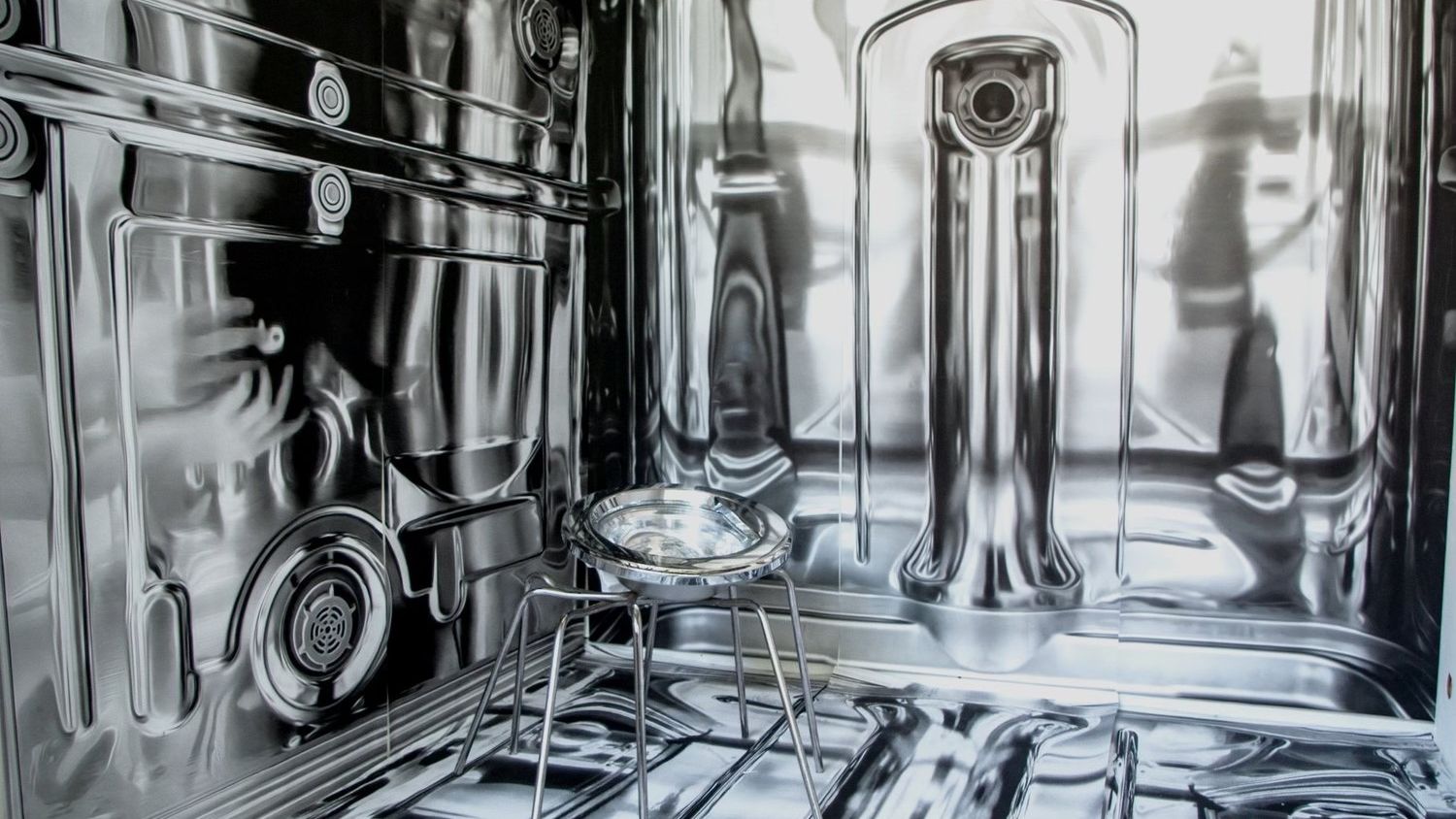
In Zoë MacPhail Prineas' world, art is a platform through which she can offer her critique of the way that femininity is presented within mass culture. In Zoë’s world, the gentle curve of a kitchen sink elicits breasts, household paraphernalia symbolises the division of labour and Barbie dolls are clad in bondage.
Through her multi-disciplinary practice, spanning from drawings, to paintings, to airbrushed clothing, to various types of prints, Zoë invites her audiences to reflect on what has constructed their perception of being feminine. Is being feminine something we can achieve by how we act, the roles we assume in society or the way our body is proportioned? Or is that something we have learned from our childhood toys, the media, pop culture and art throughout history?
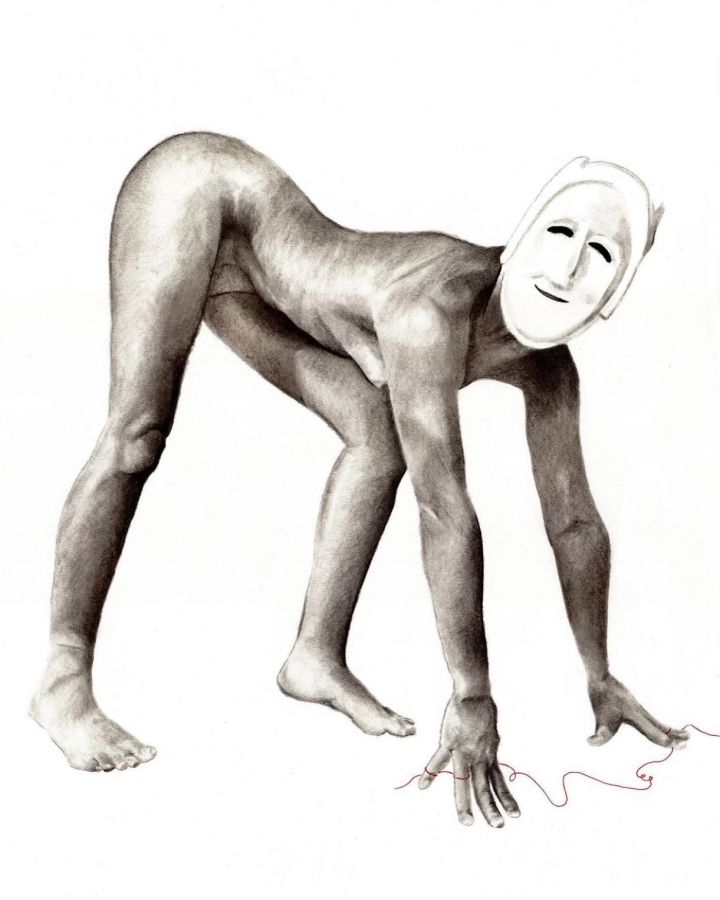
The Jester’s Web (2022), charcoal on paper, 42 x 59.4 cm.
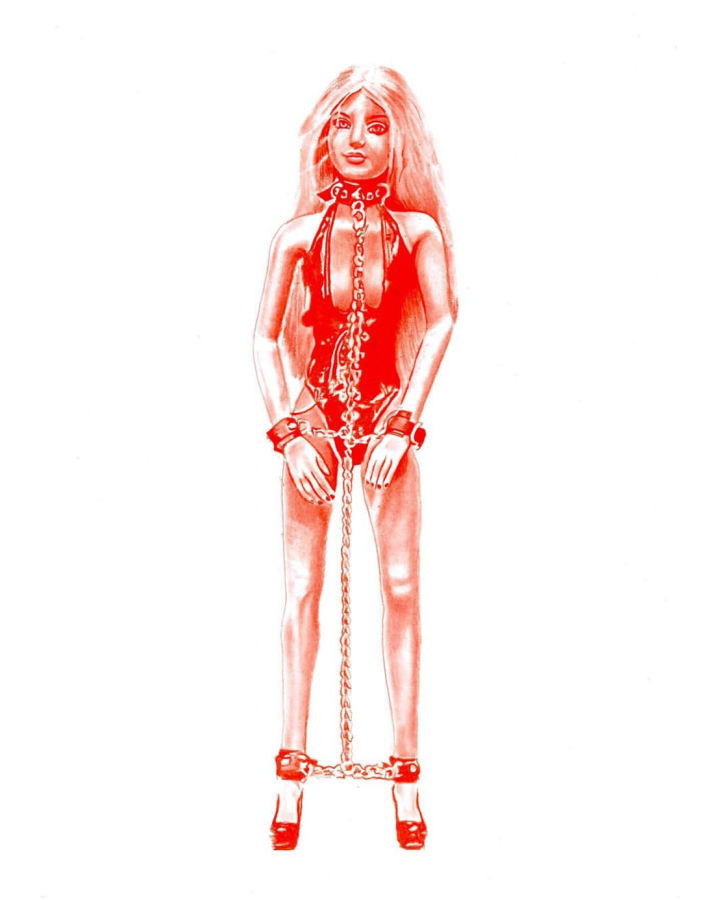
Hurt me, hurt me, hurt me! (2022) Red charcoal, pencil and pen on paper, 29 x 42 cm.
Disguised as playful representations of our internalised gender ideals, Zoë’s pieces are ultimately working to dismantle a hierarchy established within the art industry centuries before she was even born. A hierarchy stemming from European-centric, masculinist values.
By occupying this space, Zoë’s pieces aim to challenge why, as a society, we are unable to detach ourselves from our perception of the female body as innately erotic. Why the items in our home are gender-correlated and how these stereotypes and representations are digested by the individual.
We have learned throughout history that art informs culture, and Zoë is actively using her platform as a means for changing it.
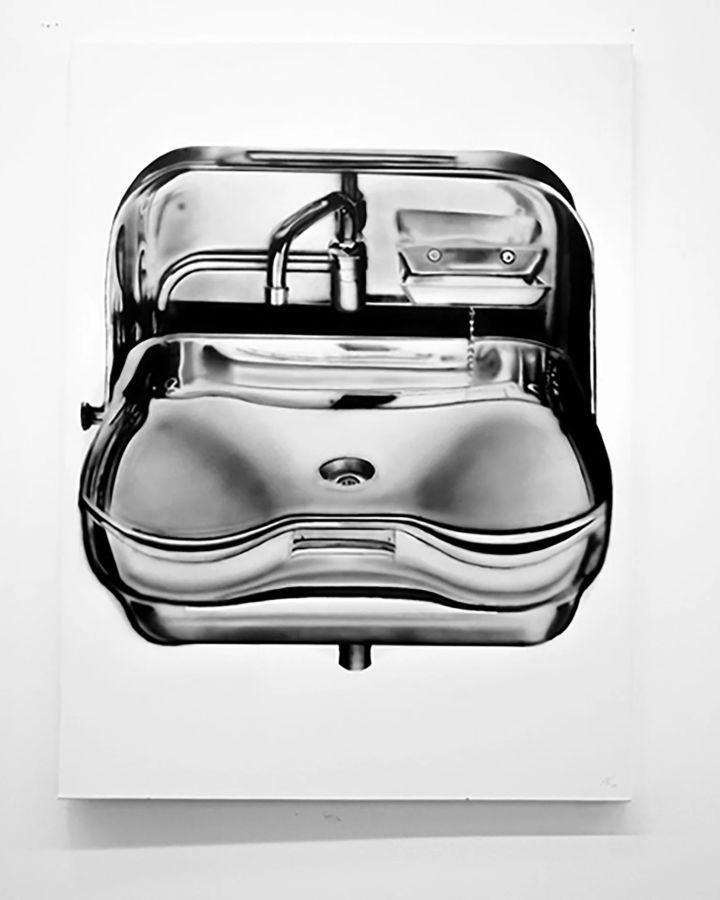
10DD (2023), acrylic on canvas, 91 x 120 cm.
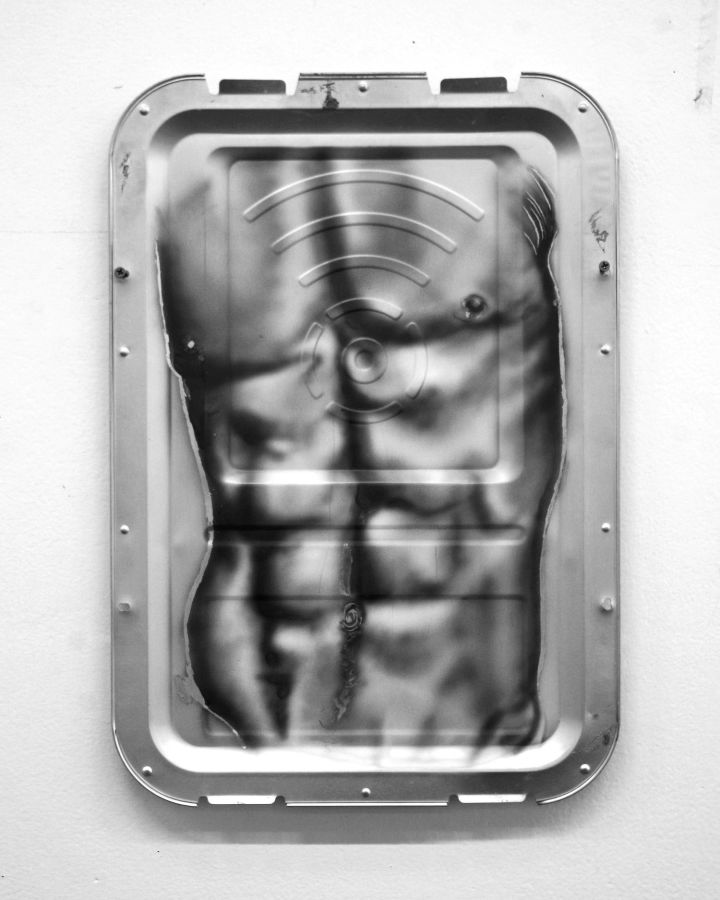
Washboard (2023), airbrushed on found watching machine part.
In an interview with Vertigo, Zoë explained,
“We are inundated with objectified and sexualised representations of the female form in films, music, advertising, fashion, art history. Growing up thinking one’s body is inherently sexual, or made for consumption produces immense feelings of shame, guilt and disgust.
My intention is not to offer a clear resolution but to prompt viewers to question the cultural scripts that automatically link a woman's body with inherent sexuality. I firmly believe that the process of sexualization inevitably leads to dehumanisation. In a culture where the commodification of sex prevails, human bodies are frequently dissected, fragmented, and repackaged, reducing individuals to superficial characteristics like "sexy," "hot," or "smooth." My art endeavours to stimulate a critical examination of this reduction, challenging the inclination to perceive a human being solely based on the surface of their skin.”
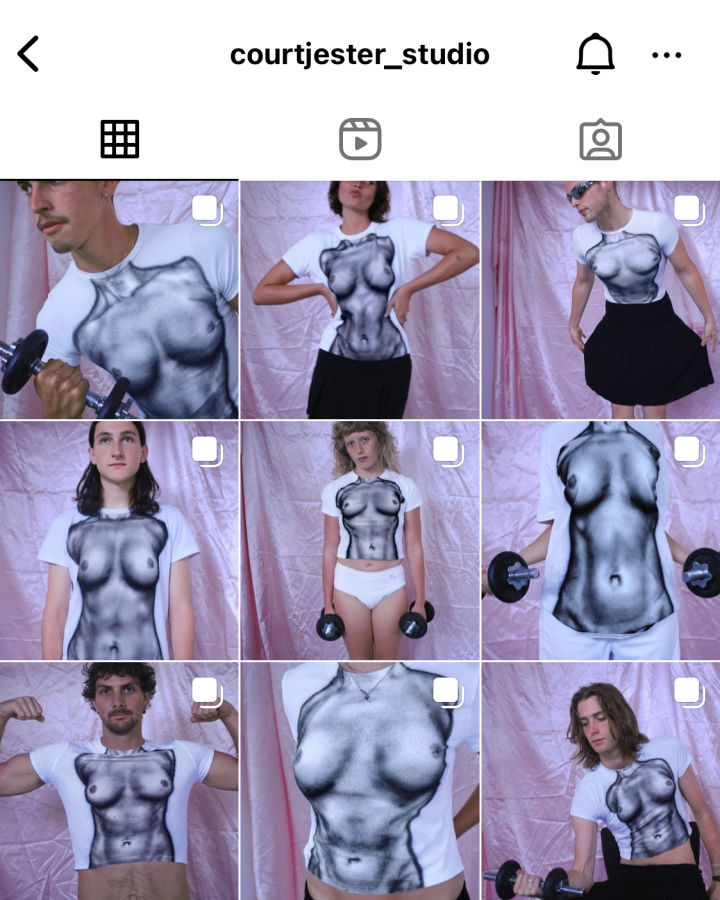
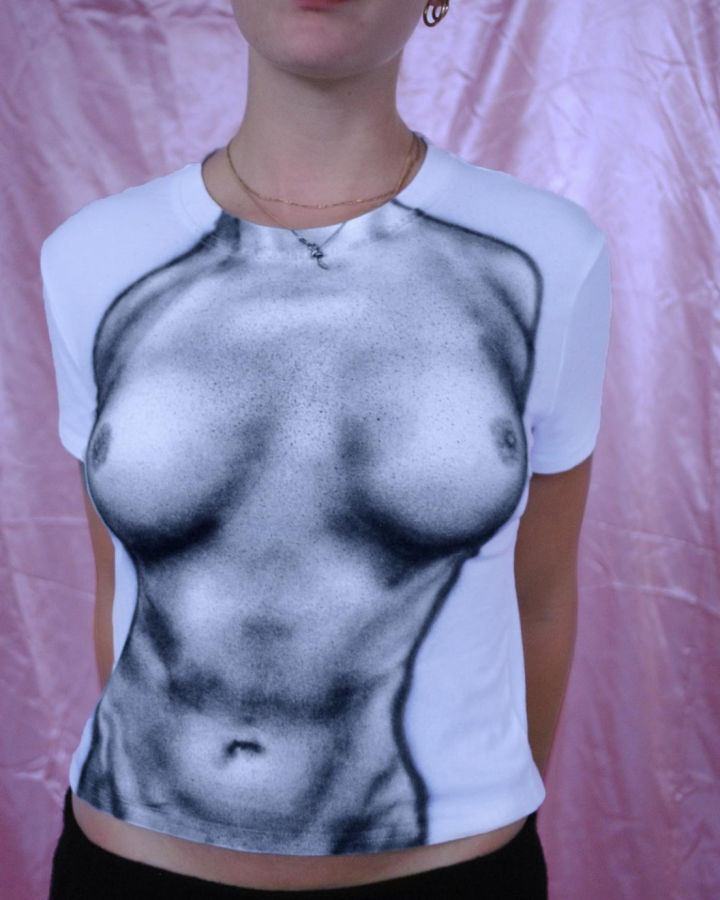
Twin Tees (2022), limited edition individually hand airbrushed cotton T-shirts sold via Zoë’s instagram @courtjester_studio
Zoë graduated from the National Art School in Darlinghurst in 2023, having completed a Bachelor of Fine Arts. Upon completing her undergraduate degree, Zoë was awarded the Bird Holocomb Foundation Master of Fine Art Scholarship. Her postgraduate studies in a Masters of Fine Arts will commence in 2024.
“Art has always punctuated my life, though it wasn’t until I went to NAS [The National Art School] that it became my dominant language. One month into NAS, I was calling myself an artist, and seeing the world with a new perception and sense of freedom. I’ve always had a lot to say, and art allows me to express things visually.
I chose printmaking as my studio specialisation, and was introduced to the field of expanded printmaking by our head of department. The field of expanded printmaking strips back the medium to the basic idea of the “trace”. I began to understand that print was anything that left a mark. Printmaking also has such strong ties to culture, as it has historically been a means for cultural production (think newspapers and billboards). I love to use this insight as a foundation of my practice.”
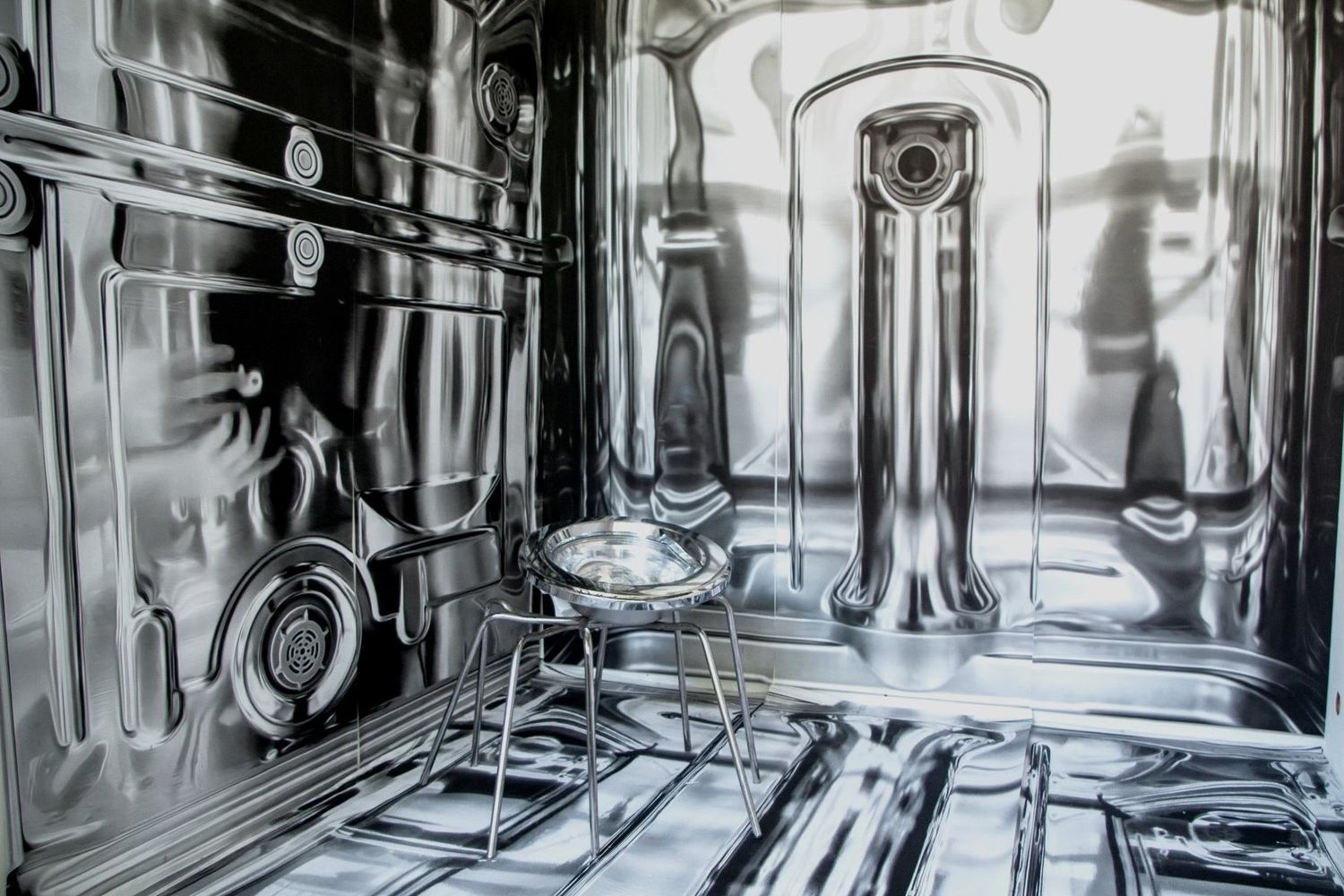
A Room of One's Home (2023), multimedia installation.
Zoë’s work holds a spatial significance to it that demands attention. Rooms transformed into the interior of a dishwasher that the viewer can enter, and prints hanging in a vortex of fetishised materials such as chains and tassels. This overwhelming physicality pushes the conventional relationship between artwork and audience, allowing for a deeper level of interaction whilst accentuating their conceptuality.
“My practice began to expand into more three dimensional forms when I began incorporating found objects. My material choices often carry metaphorical weight, and my use of them comes from a sense of intuition. I am constantly in a state of play when I’m ruminating on these ideas, and I sort of follow my nose. I’m of the opinion that all contemporary art is interdisciplinary. I think dividing art into differing cilos is an outdated, miopic view."
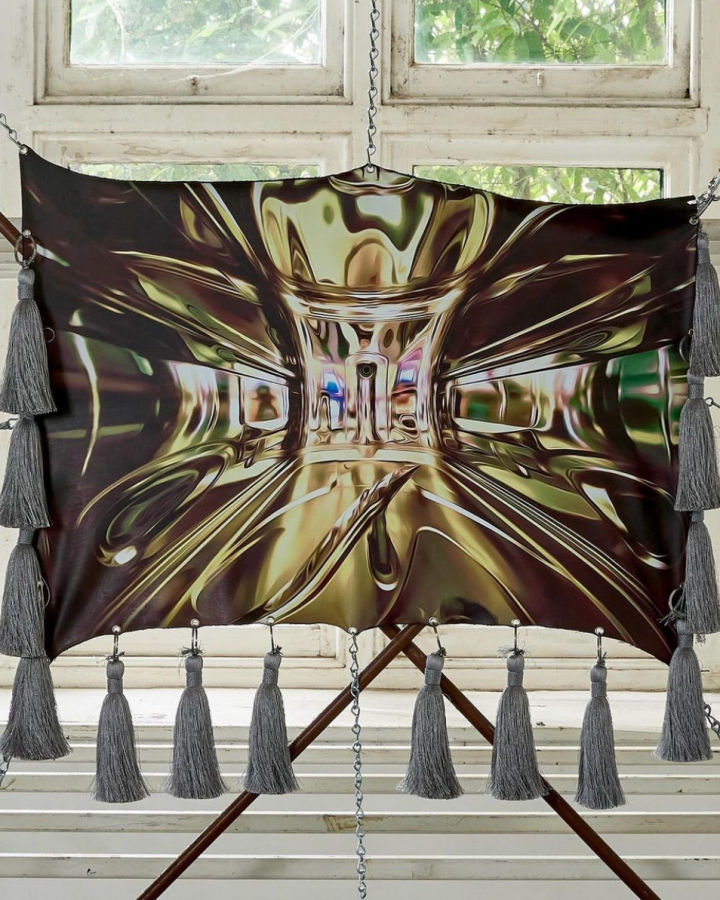
Facelift (after Sontage) (2023), heat transfer, vinyl, stretch fabric, chains, tassels.
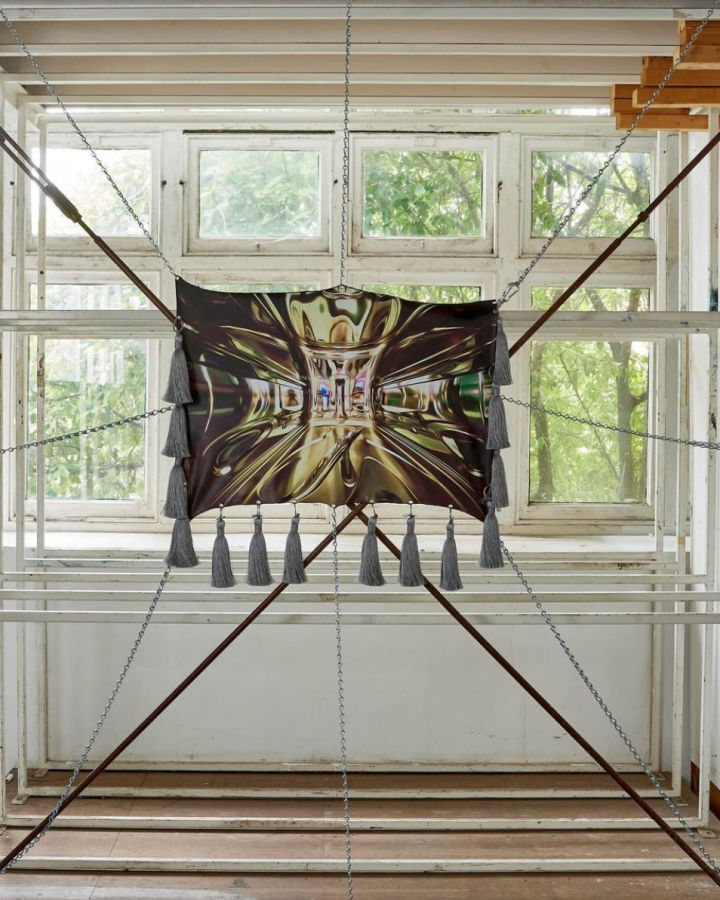
Zoë’s transition into expanded prints throughout the duration of her studies has seen a considerable shift in the material subject of her work, yet her conceptual focus on femininity and gender roles has only been amplified over time.
“For me, compelling art prompts the question "why?" and deliberately avoids providing a definitive answer. This approach is aimed at encouraging reflection, contemplation, and meditation, creating a space for the audience to interpret their own impressions and ideas. As an artist, my intention is to present the problem rather than dictate a solution. Art is inherently collaborative, relying on the viewer to bring their unique ideology, beliefs, ideas, opinions, and biases into the engagement.
In moving away from explicit depictions of the female body, I have chosen to imbue familiar objects and technologies with anthropomorphic qualities, particularly household appliances laden with cultural narratives about domestic life. While a bare chest might cause the audience to cast their eyes, exaggerating the feminine silhouette of a sink might invite greater introspection. Through the masculine form of a tap, or a dishwasher rack repurposed into a soft sculpture suggesting visceral innards, these objects become metaphors for societal expectations that shape who we are and how we should behave. ”
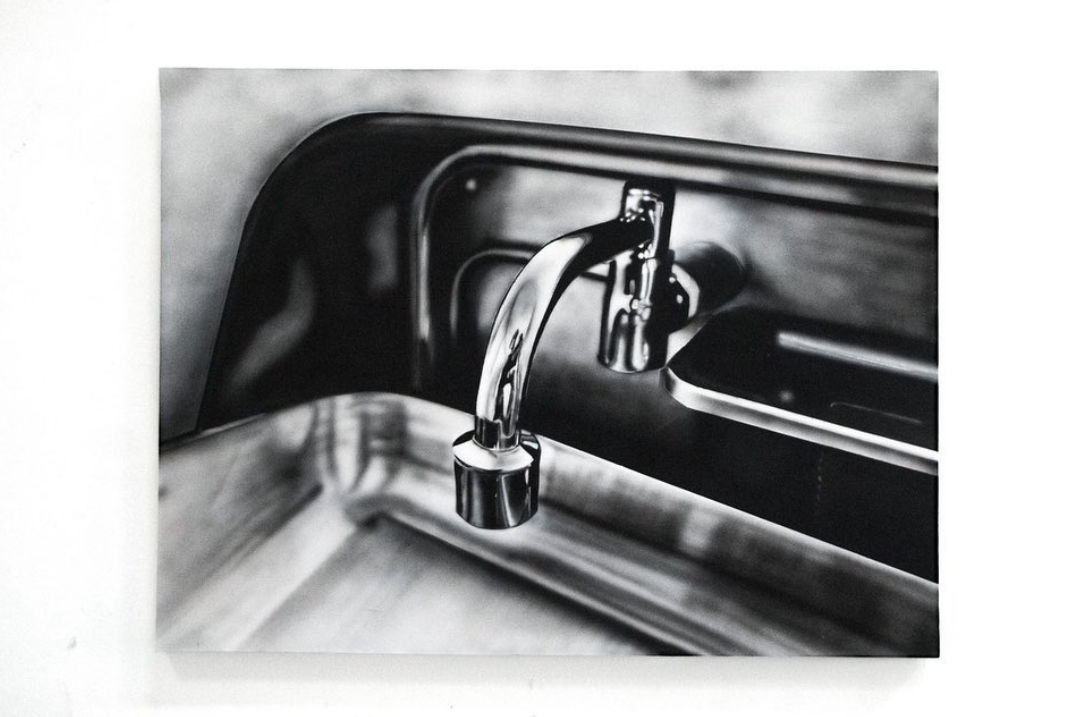
Ceci est une pipe (2023), acrylic on canvas, 91 x 122 cm.
“A pivotal moment in this transformation occurred during a critique session with a male teacher in mid-2023. I had displayed a series of drawings featuring Kardashian-like feminine creatures. He ignored all my works that featured the feminine figure. Instead, he suggested I consider what Picasso achieved in Still Life with a Guitar, where the essence of the body was suggested through the context of the guitar by blending abstraction and representation. I despised this advice at the time, scrunching my nose at the mention of one of the most notorious misogynists in art history. Though in hindsight, I’ve realised that this advice did penetrate my practice. Explicit representations of the body disappeared from my work. Objects became proxies for the human form, where I employed their shapes and lines to indirectly reference and symbolise the body.”
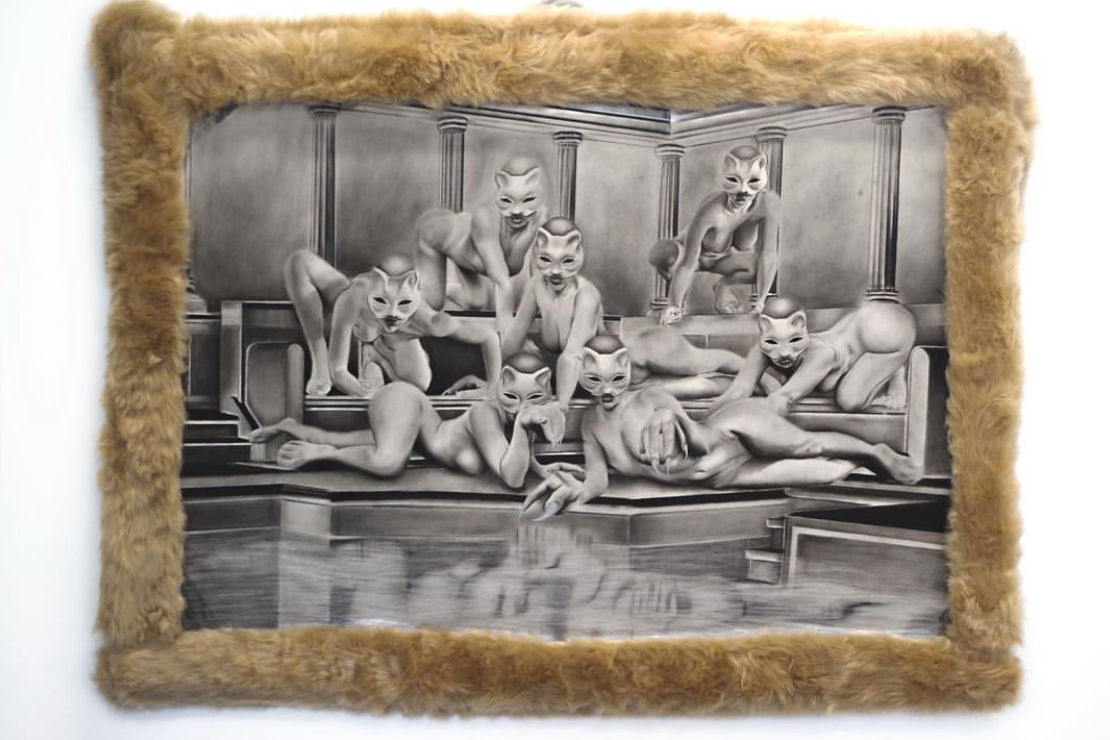
Natural Selection (2023), charcoal on paper framed in skinned furry, 59.4 x 84.1 cm.
So what can we expect from Zoë Macphail Prineas in the future?
“I am set to begin my Master of Fine Art at NAS in March and I am very eager to embark on this chapter. I am envisioning some challenging projects that will require me to upskill. I’m planning to take on a 3D modelling course and gain proficiency with Blender [a 3D creation site] so I can delve into some 3D printing this year. In the meantime, I have been putting my energy into my side hustle, which runs parallel to my practice - my “wearable art”. I’m hoping to bring out a new collection early this year which is set to coincide with a pop-up in Melbourne. I’ve also got a few group show plans, including one at Airspace in Marrickville.”
Until her postgraduate studies commence, Zoë is working out of her studio in Sydney, Australia. Updated opportunities to view or purchase her work, including the sale of her wearable art is available via her instagram account @courtjester_studio or her website https://www.zoeprineas.com.
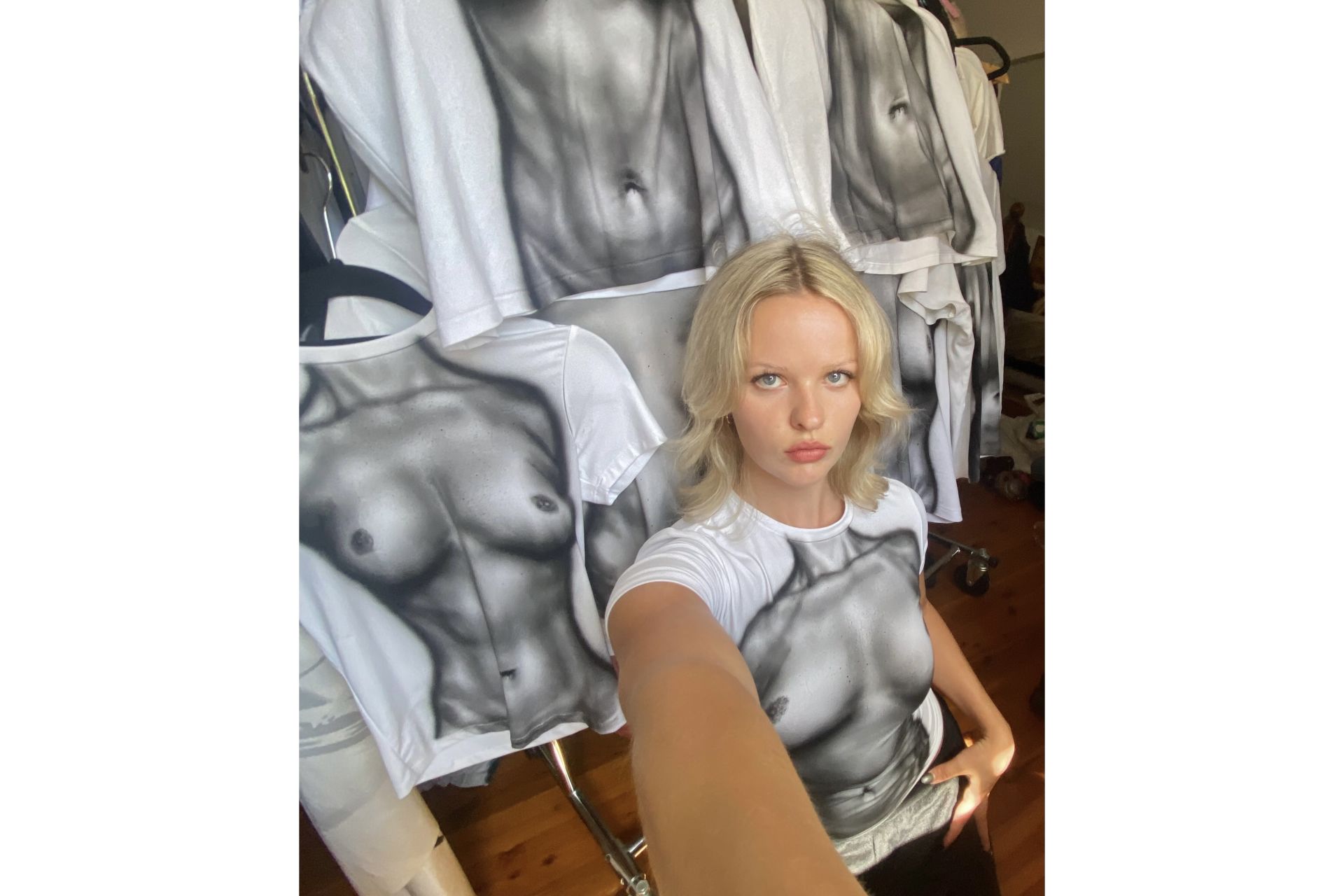

 -
-